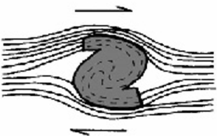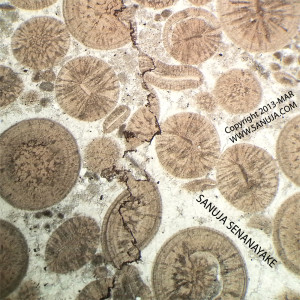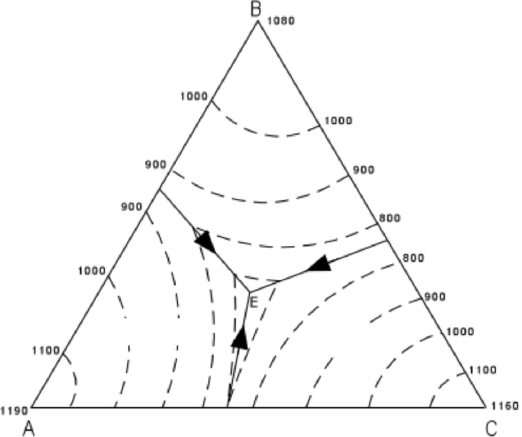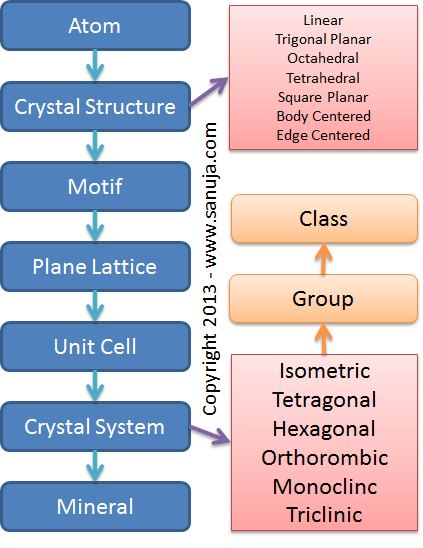Mineralogy (GLGY 311-UCAL) Final Exam
Congratulations - you have completed Mineralogy (GLGY 311-UCAL) Final Exam.
You scored %%SCORE%% out of %%TOTAL%%. With incorrect multiple attempts your score is %%PERCENTAGE%%
Your performance has been rated as %%RATING%%
Credits: Based on the excellent class notes provided by, Mr. William Matthews. You may download the PDF version of the entire exam here.
Some of the lab samples and mineral data | Click here
Mineral Identification
Mineral Identification chart with few minerals for first and second year students. If you would like to download the PDF file, please right click here and save it on your computer.
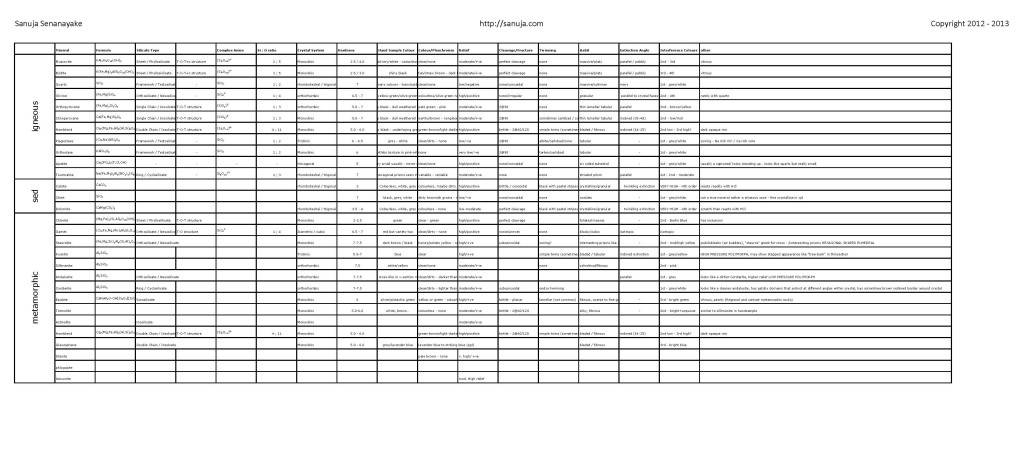
If you don’t know how these descriptions are derived, please read the textbook, lecture notes or info posted below.
Final Exam Concept Questions
Describe the different plate tectonic settings of igneous rocks. Where do igneous rocks occur? What processes in the crust and mantle result in melting to produce igneous rocks? Are rock types produced at different plate boundaries the same, or are they different? Use diagrams if desired.
Melting of rocks in hot, deep crust and upper mantle and solidification of such magma produces igneous rocks. The igneous rock type depends on the chemistry of the magma. The type of elements present in magma is related to its source.
Magma is produced in or around the plate boundaries. However, it should be noted that not all plate boundaries would create magmas. Transform boundaries lacks the necessary pressure and temperature conditions to form magmas. Divergent and convergent boundaries on the other hand can satisfy the conditions.
Igneous rocks can be formed either directly from both plutonic processes (intrusive) and extrusive processes (extrusive). More mafic igneous rocks such as basalts and gabbros, rich in iron forms in the Mid Ocean Ridges (MORs) while more felsic igneous rocks such as granite and rhyolite, rich in silica are formed in seduction zones.
Describe the six different silicate classes (neso-, soro-, ring, chain, sheet and framework silicates). Explain the degree of silica polymerisation in each class using sketches. Provide an example of a common mineral in each class. Explain how the silicate structures relate to the physical properties such as cleavage.
Please read, Silicate Classes and know the following
Many of the world’s largest and most profitable ore resources are found in Canada. In particular, 1) Kimberlite diamonds, 2) Unconformity uranium, 3) Magmatic Ni-Cu, and 4) Porphyry Cu. Explain how these four deposit-types are formed and where they are found in Canada. Use diagrams if desired.
Please read: Types of Ore Deposits
Describe some processes that may account for the compositional diversity of igneous rocks. Use diagrams if desired.
Igneous differentiation processes such as fractional crystallization, magma mixing, assimilation and partial melting are the primary processes for diversity in igneous rocks. In addition, the intrusive verses extrusive and the origin of the magma can create different type of minerals.
What are three different types of metamorphism? List three characteristics of each kind of metamorphism. What kind of geologic environment would you expect to see each kind of metamorphism?
- Regional: Over a wide area
- Local: Over a limited area. Magmatic intrusions are the most common type.
- Dynamic:
Name three different kinds of sedimentary structures. Describe the characteristics of each, what they tell you about the conditions of deposition and what sort of depositional environment you might find each structure in. Use diagrams if desired.
Cross-bedding
Ripple marks
Tool marks
Flute casts
Mud cracks
Load structures
Pretend you are a rock at the “Igneous Anonymous” meeting in the basement of the Earth Sciences Building. You are expected to tell your peers about yourself. What kind of rock are you? Where are you from? What are your plans for the future?
I am an igneous rock of felsic origin and my parents are super-hot magmas. They were born as a result of melting in the subducting crust due to the friction between them. My mom was an oceanic crust and my dad was a continental crust. I was born as a rhyolite and I consider myself a really fined grained person. I don’t know why, but majority of my genes are a mixture of quartz, potassium feldspar and sodium feldspar. That’s right folks, I am light skinned! Not that I despise the darker skinned perdidotite friends or anything.
My future plain is to get intruded by a smoking hot magma and if that won’t happen, I don’t mind rocking my bed in a regional swing.
What processes lead to loose sediment becoming a sedimentary rock? Give examples from different types of sedimentary rock. Use sketches if you like.
Simply the process can be broken down into three parts; deposition, burial and lithofication. The lithofication is the process which forms sedimentary rocks. It converts lose sediments into rock through compaction (mechanical reduction of porosity), cementation (chemical precipitation of minerals between sediments) and recrystallization (formation of new crystalline mineral grains in the rock).
Describe Bowen’s Reaction Series. Give some examples of how Bowen’s Reaction Series systemizes a wide range of observations on silicate mineral structures, igneous rocks and sedimentary rocks.
By breaking the types of mineral formation into two categories; continuous and discontinuous, it incorporates both silica rich and silica poor minerals into its system. By having a discontinuous series it also ensures the inclusion of minerals that would not be formed under the same condition (eq. olivine and biotite). The temperature was the variable for the experiments used to derive this series. Therefore, it is organized with the minerals that form in high temperatures at the top to the minerals that from at low temperatures as it goes down. This also make it easier to understand natural processes because in nature magma started with a high temperature and cools down slowly.
